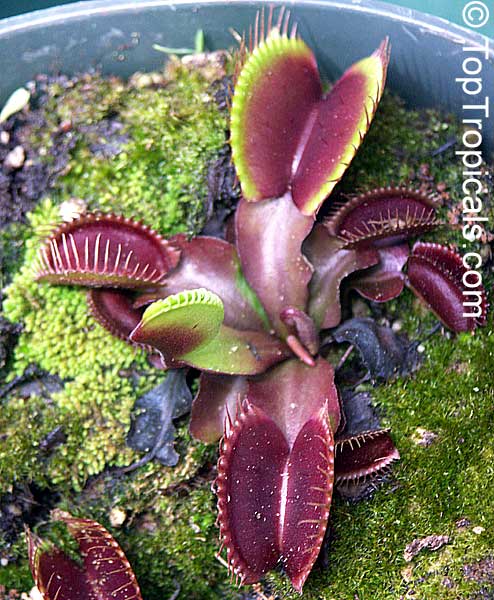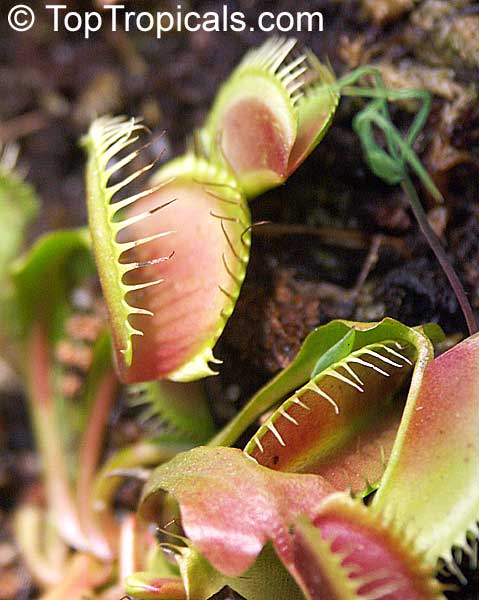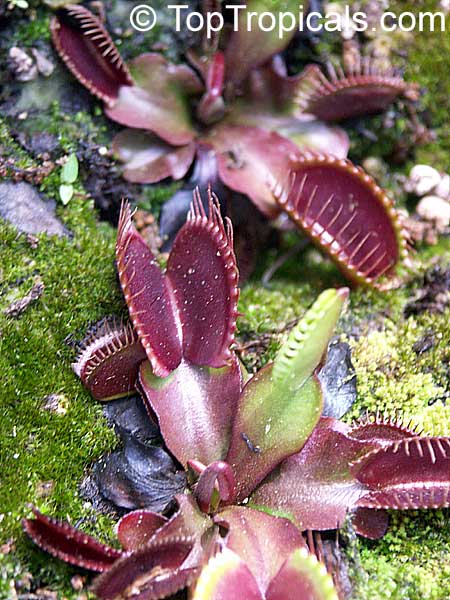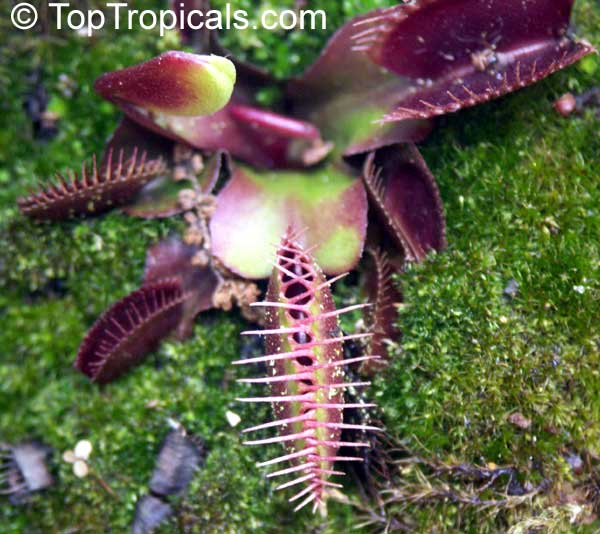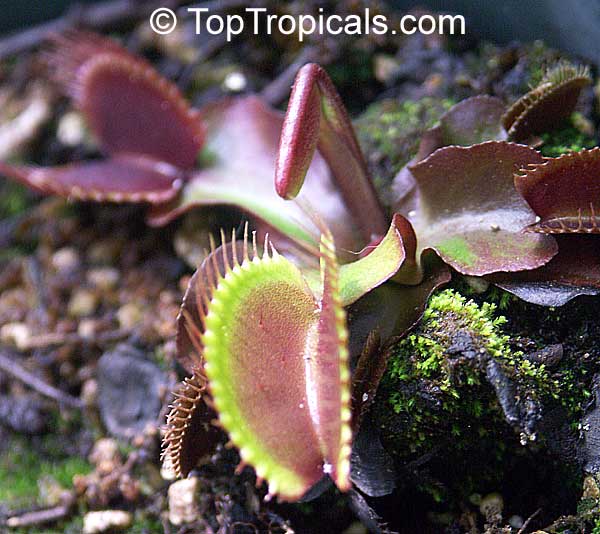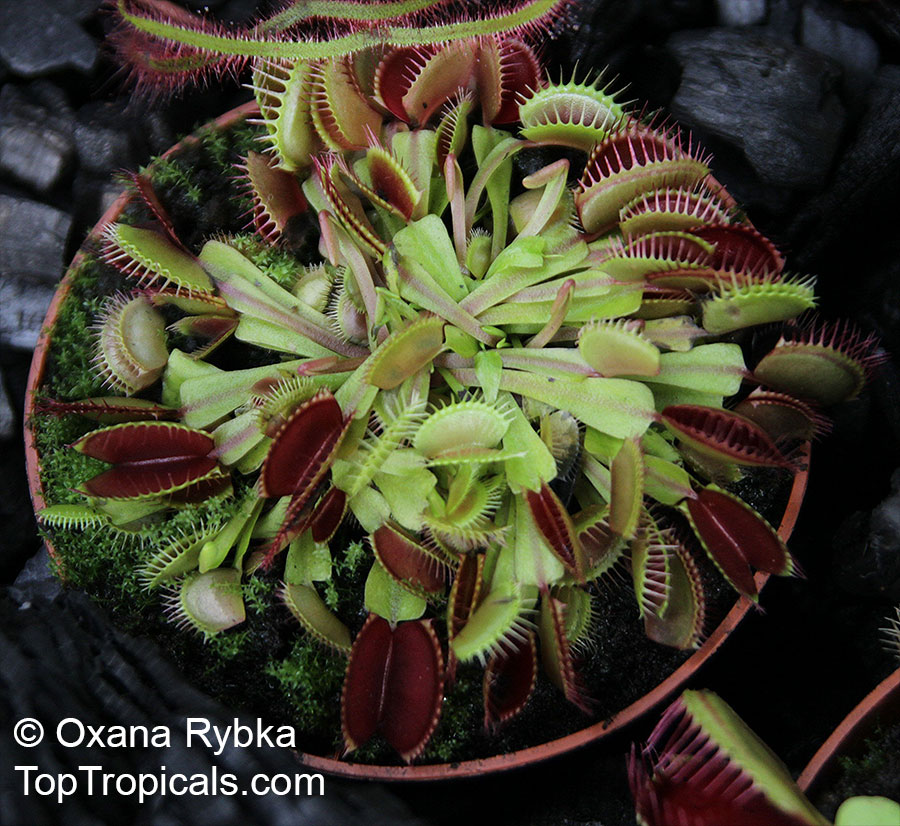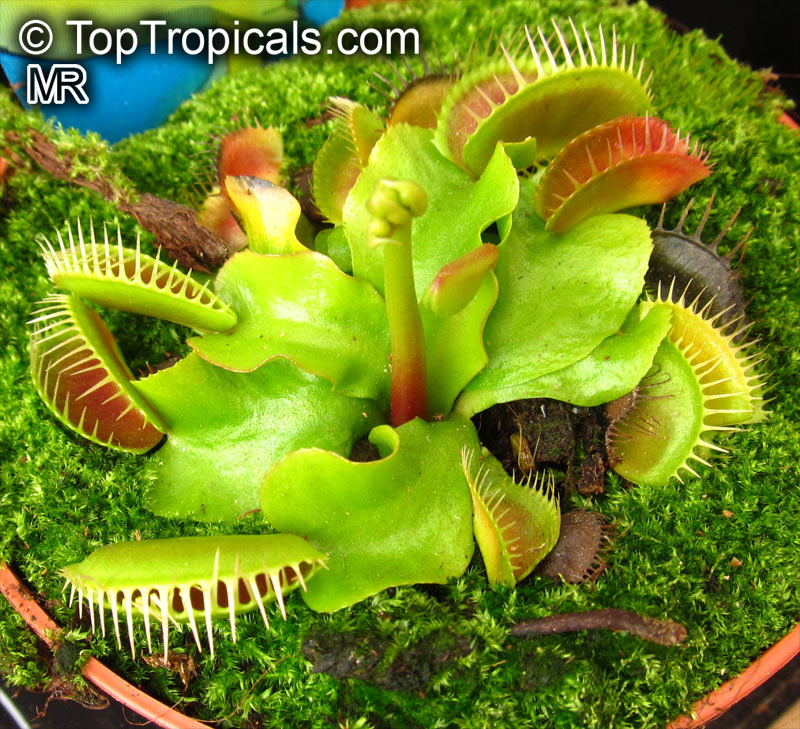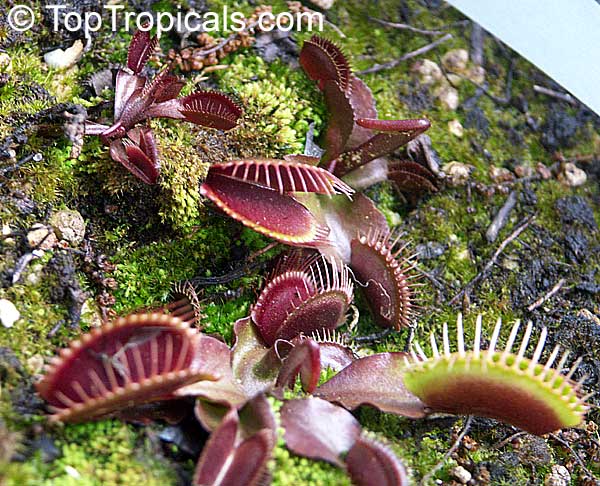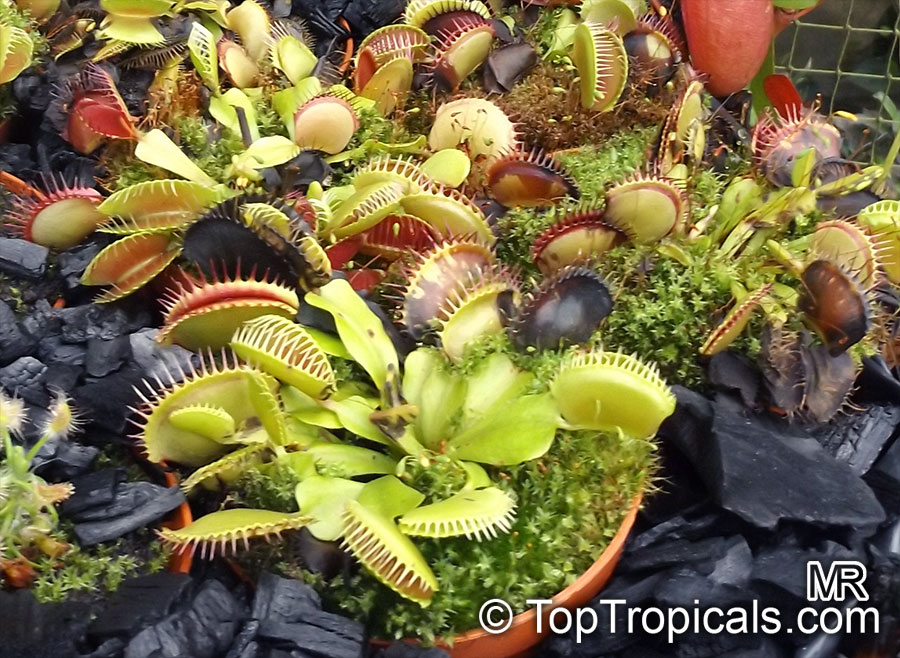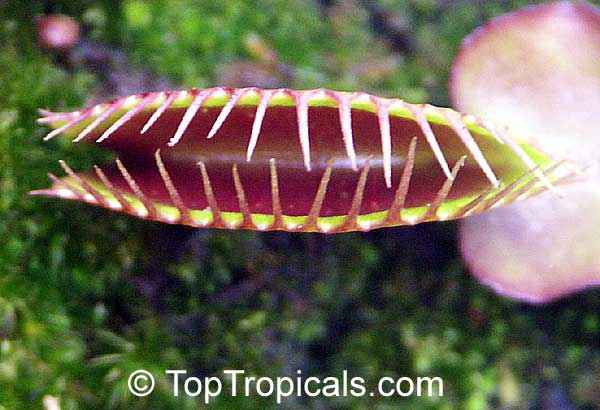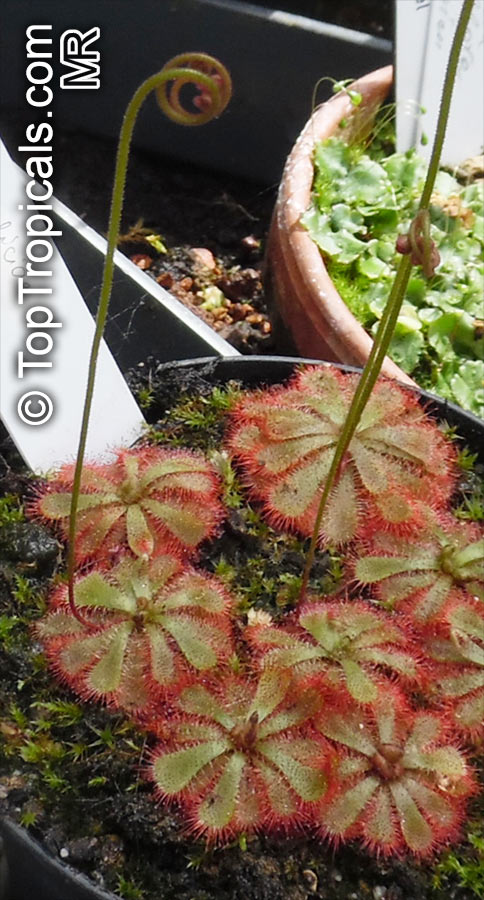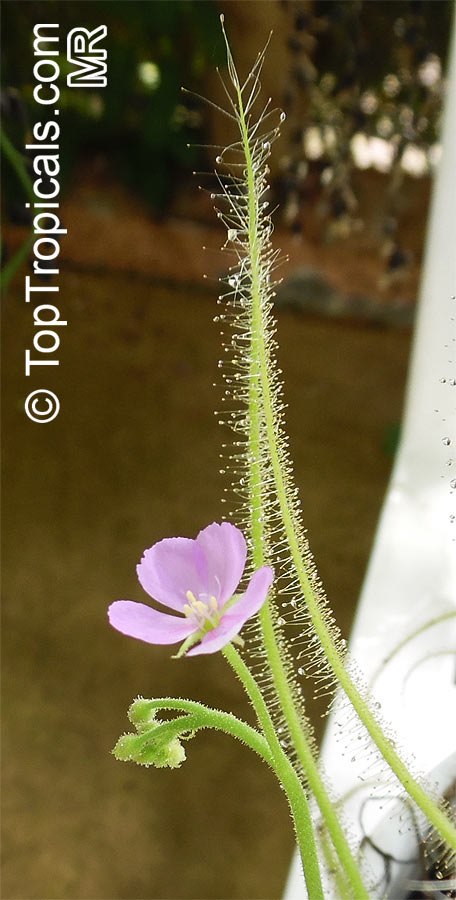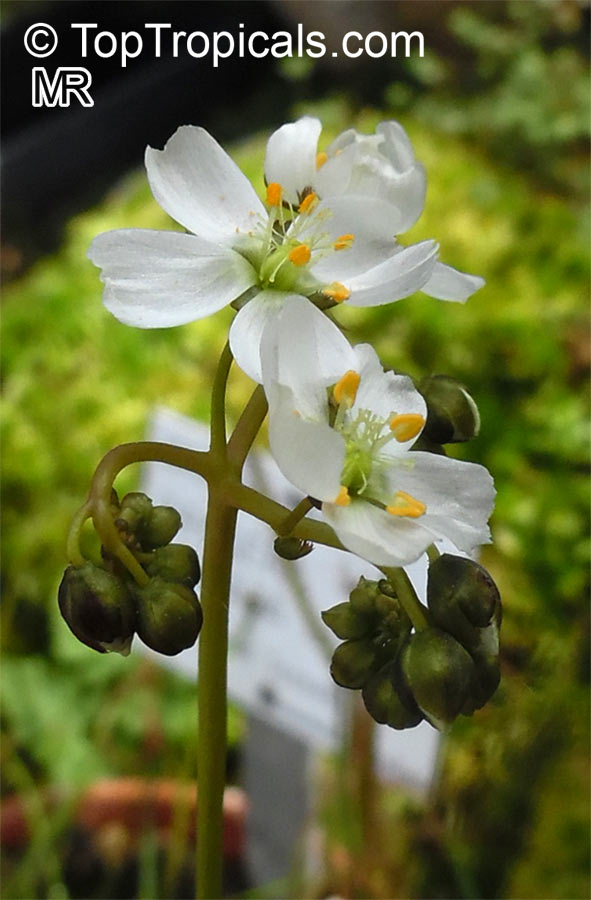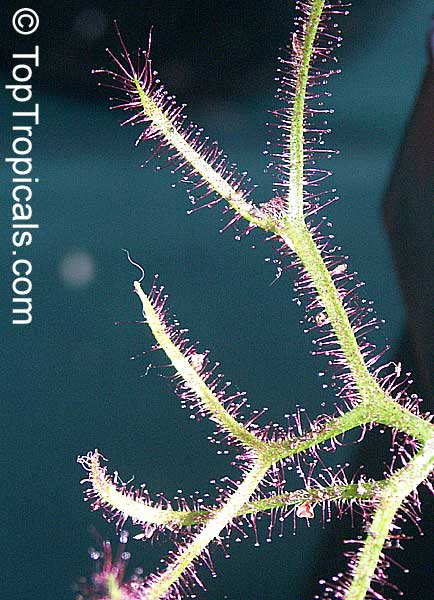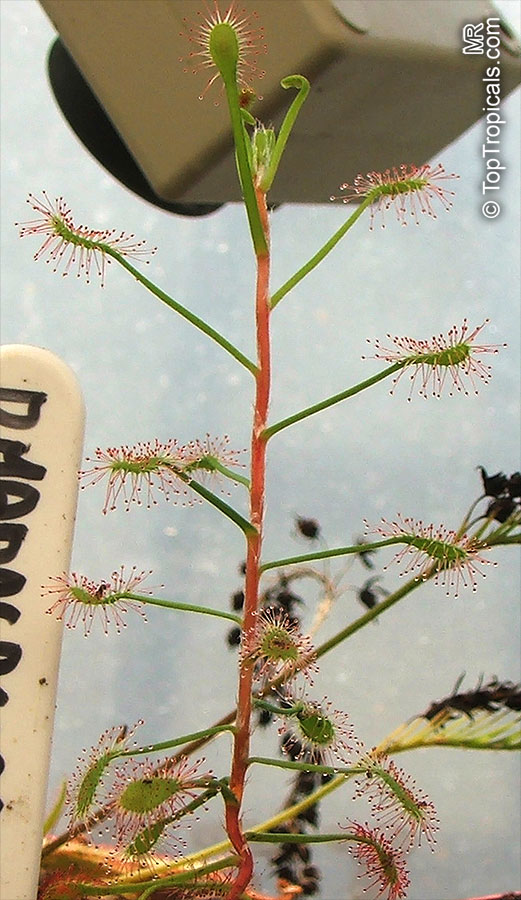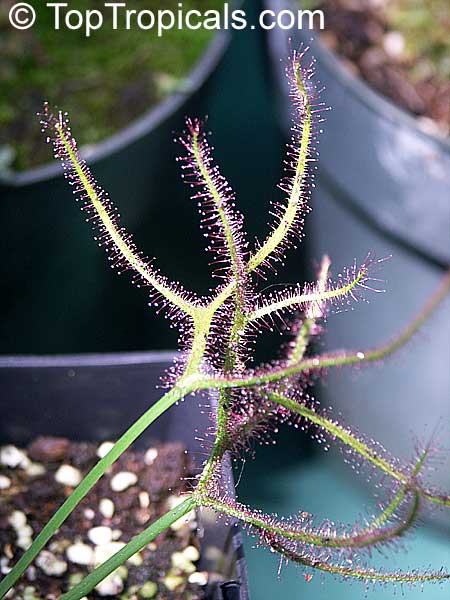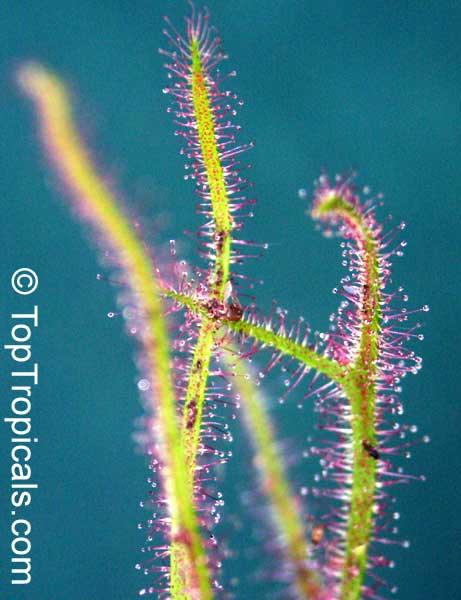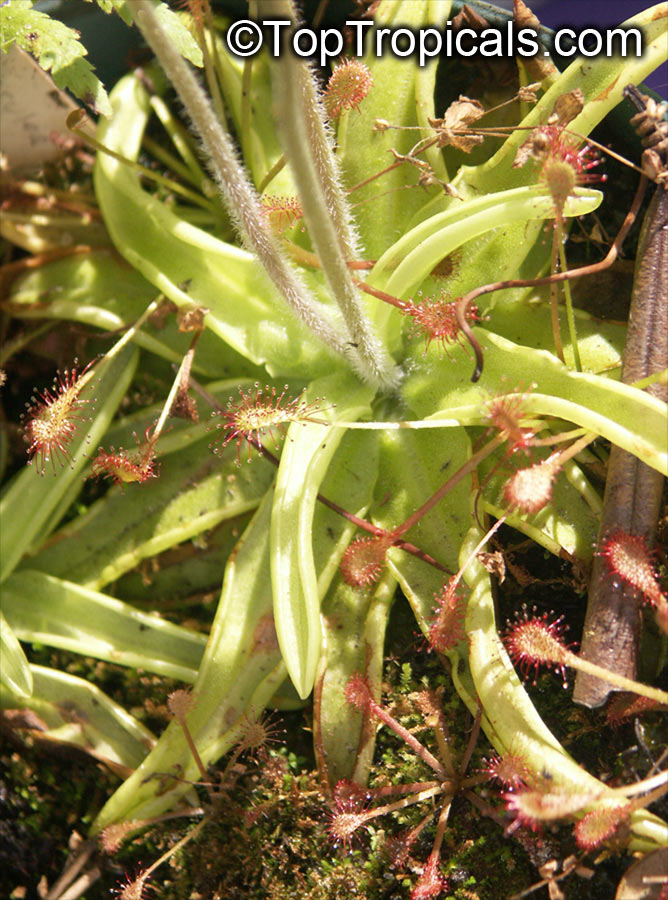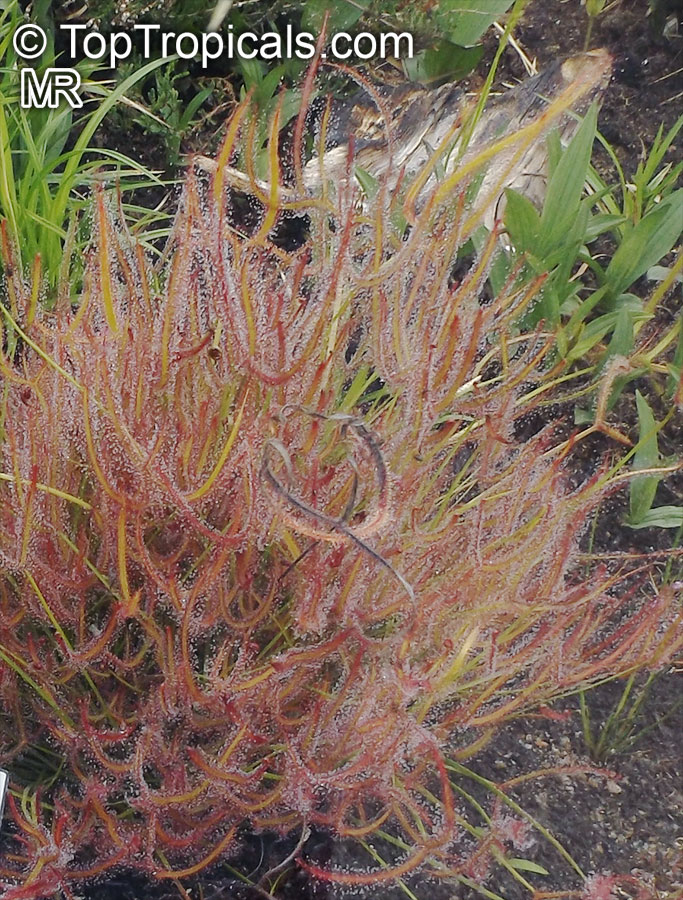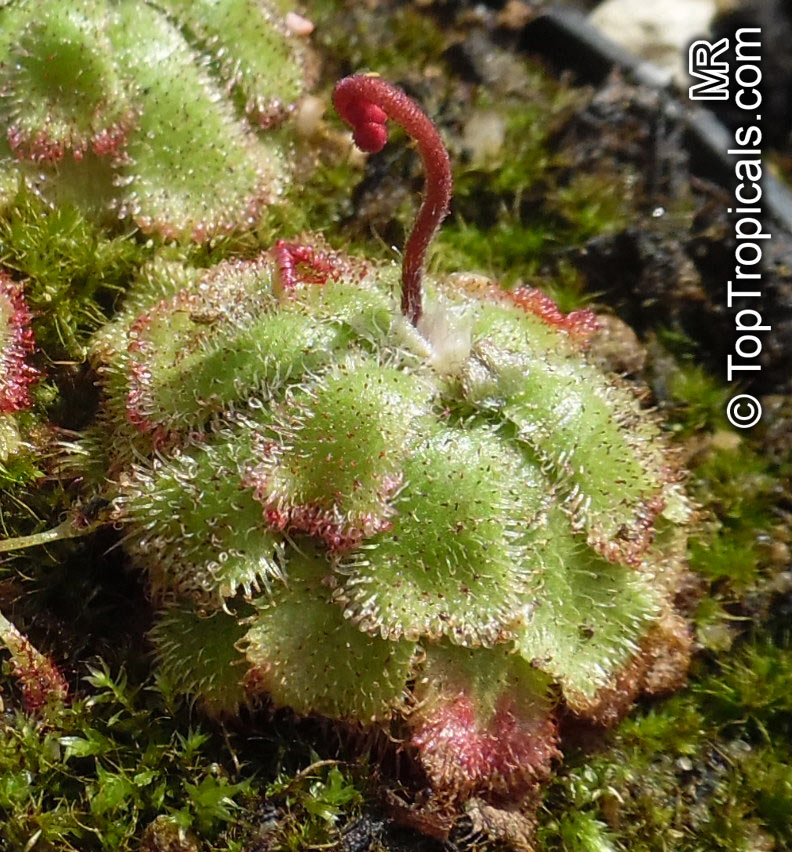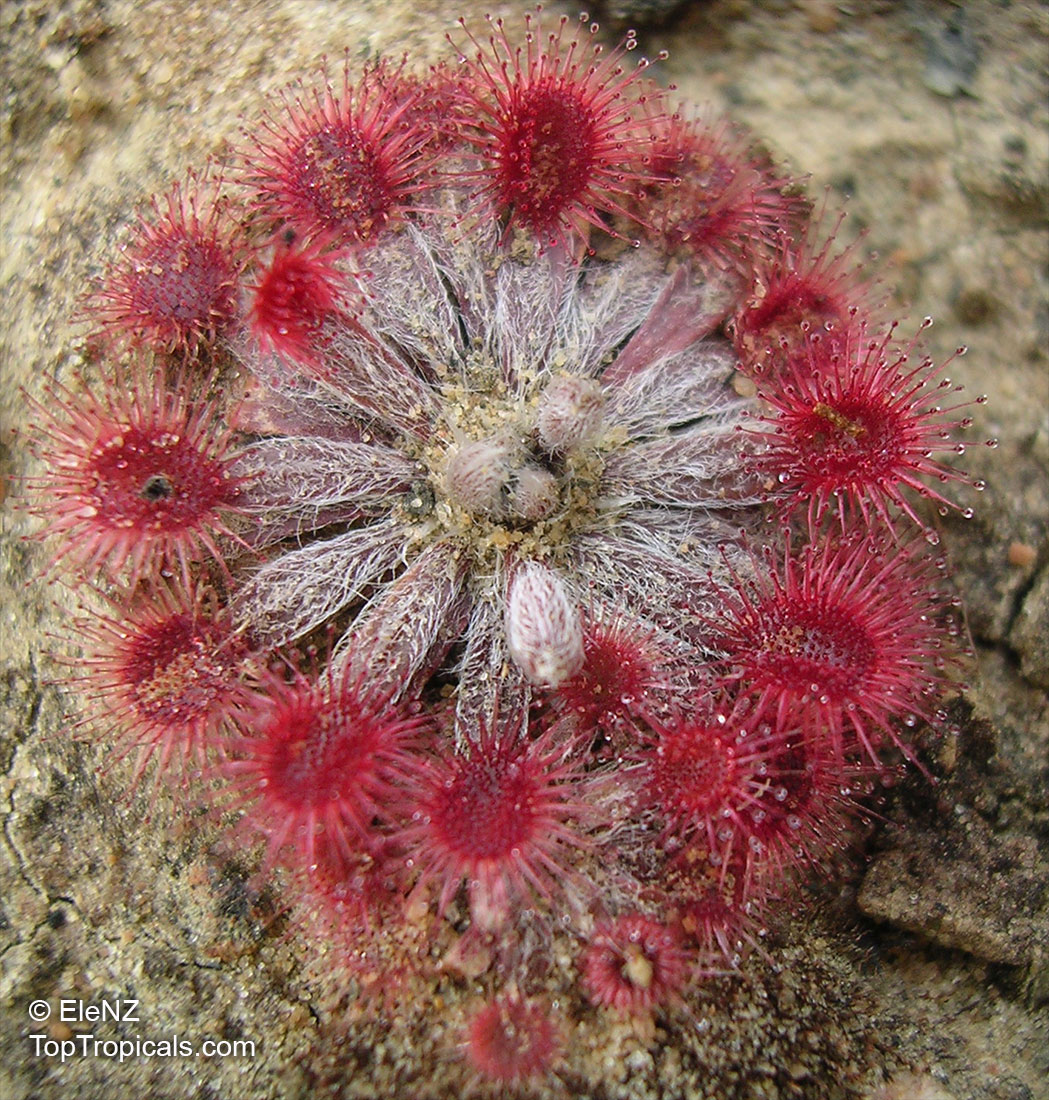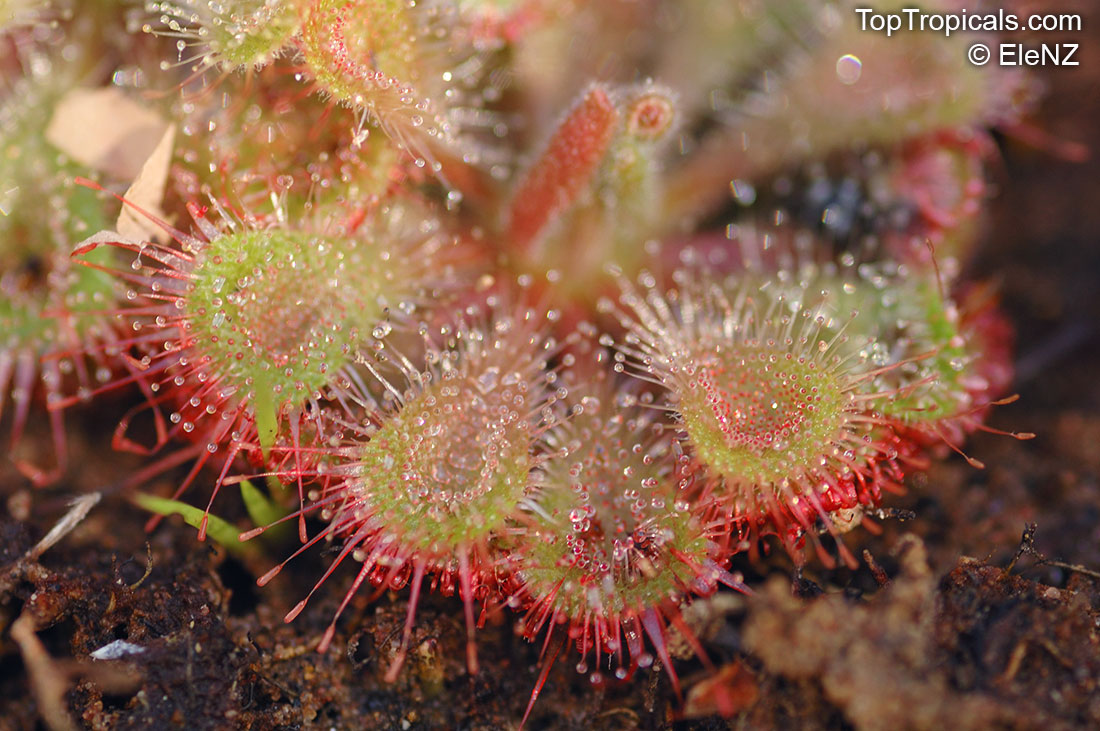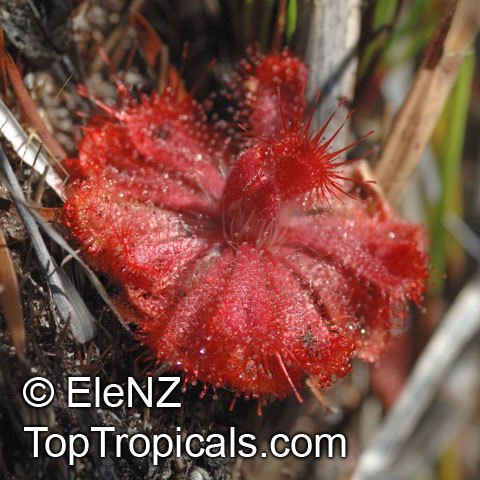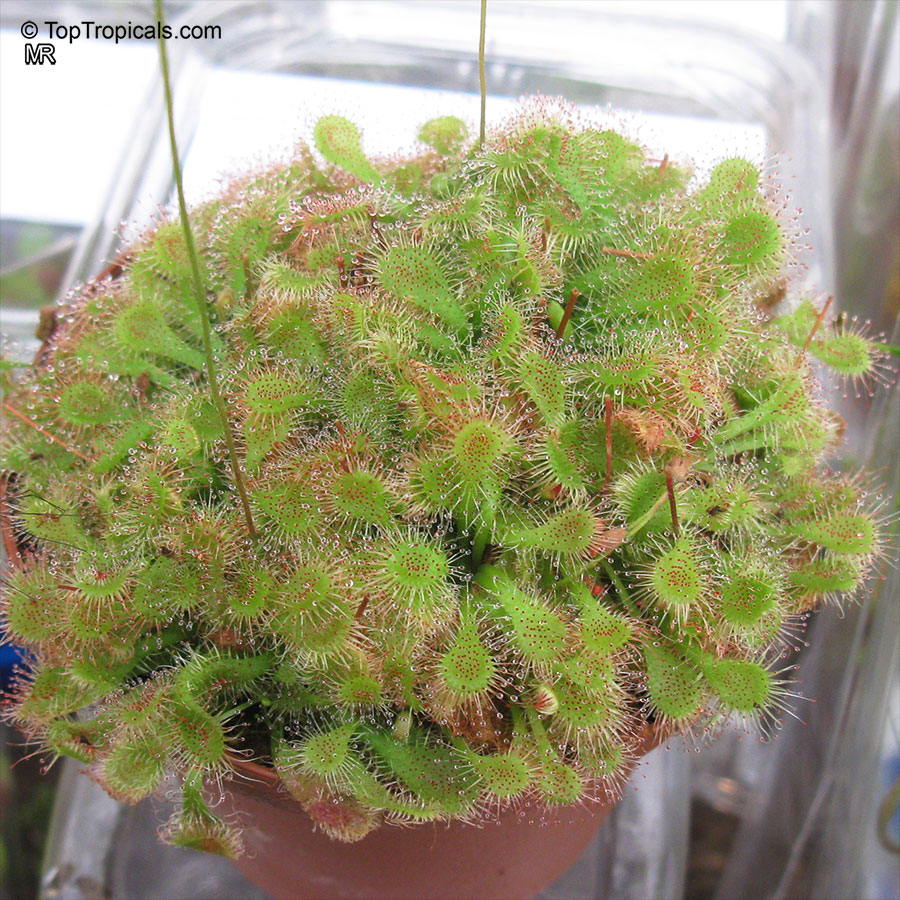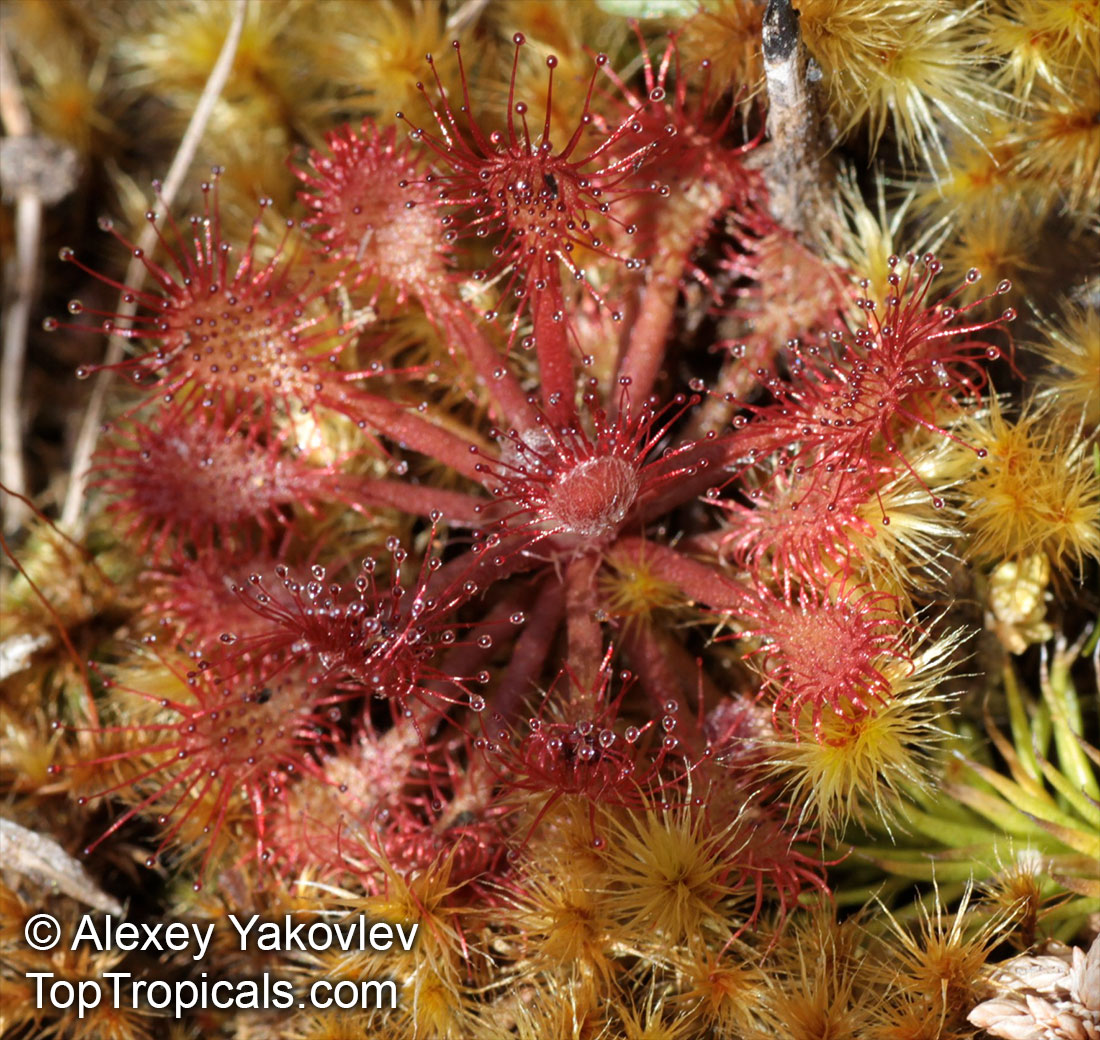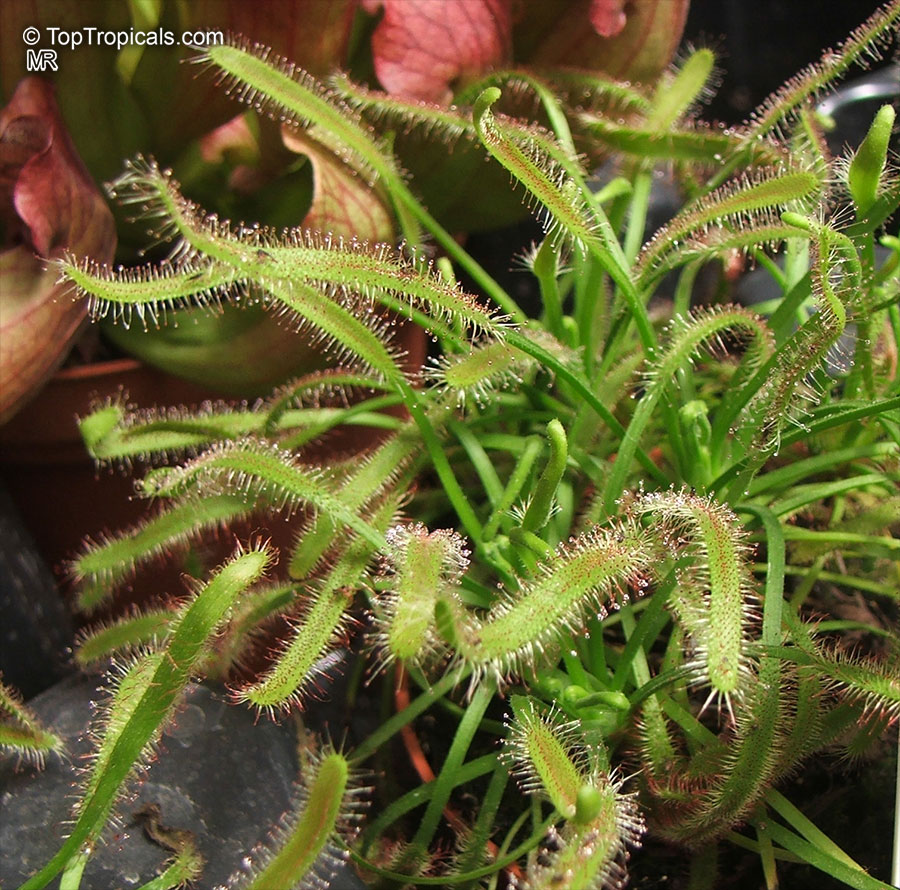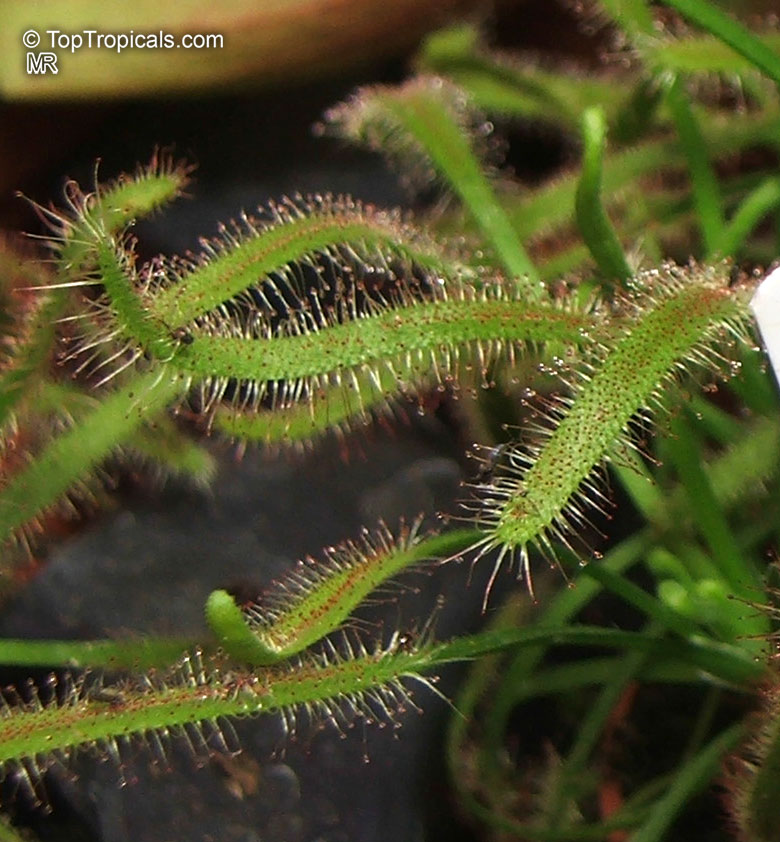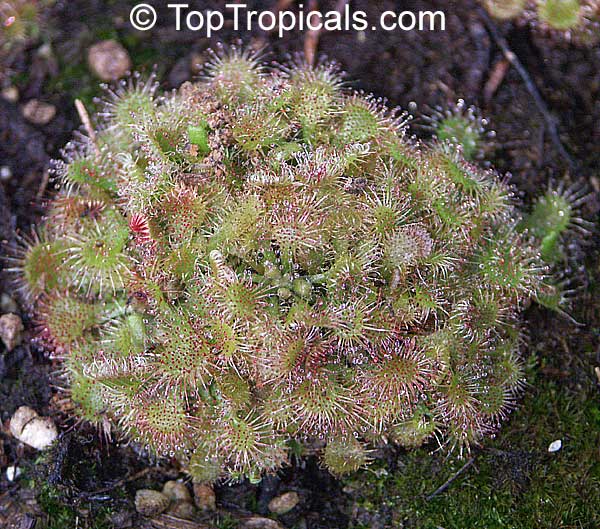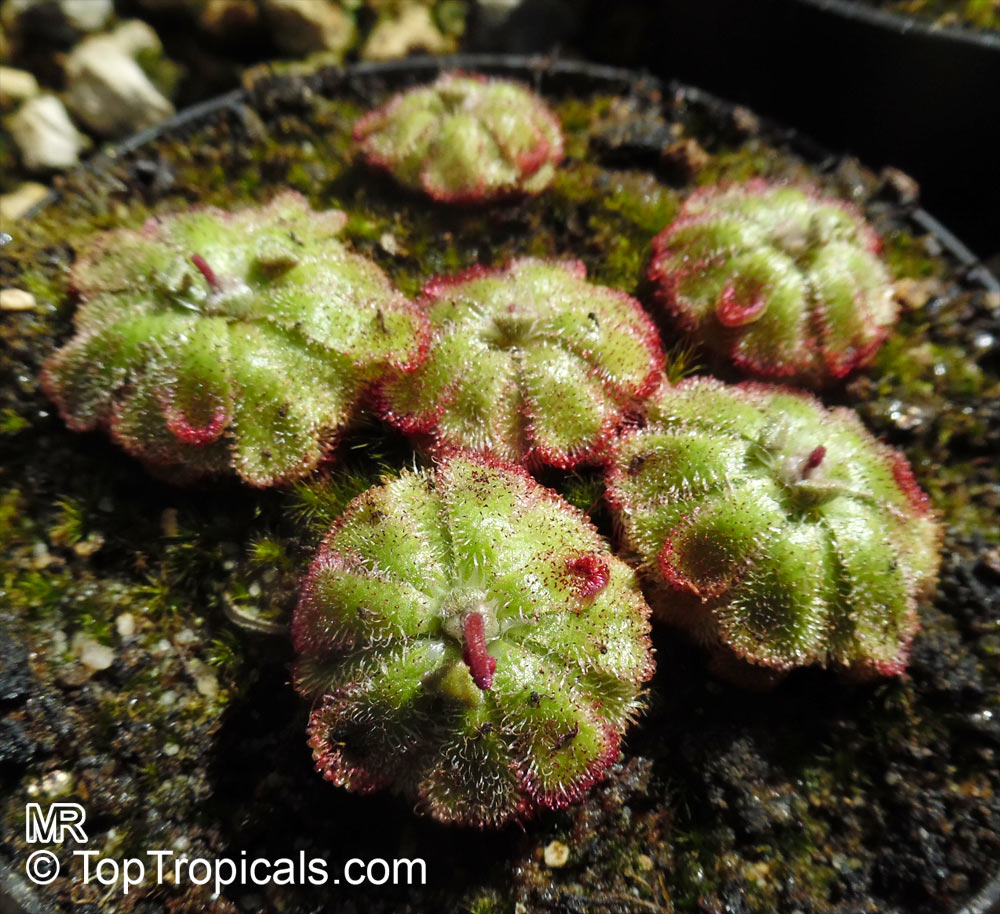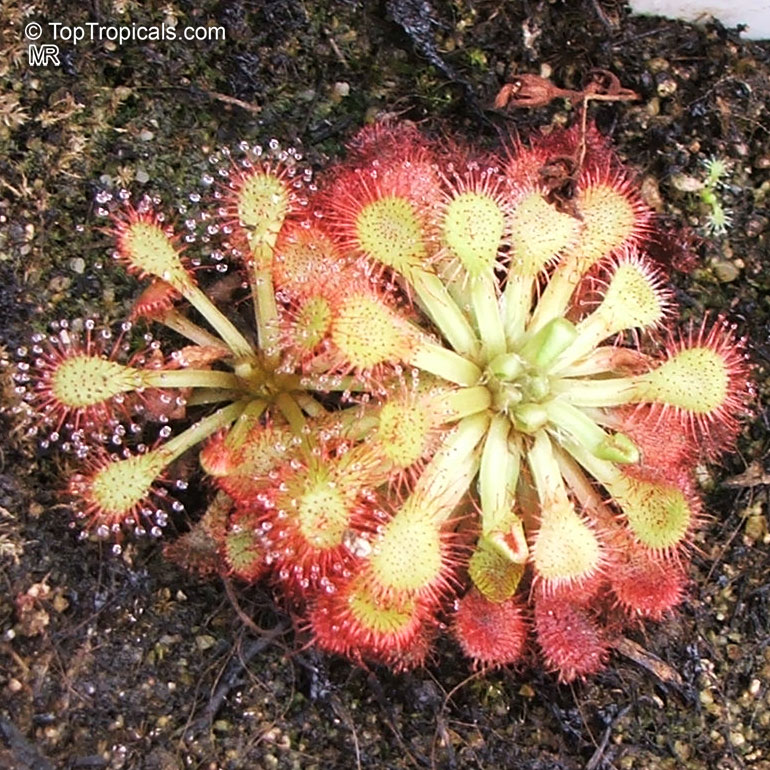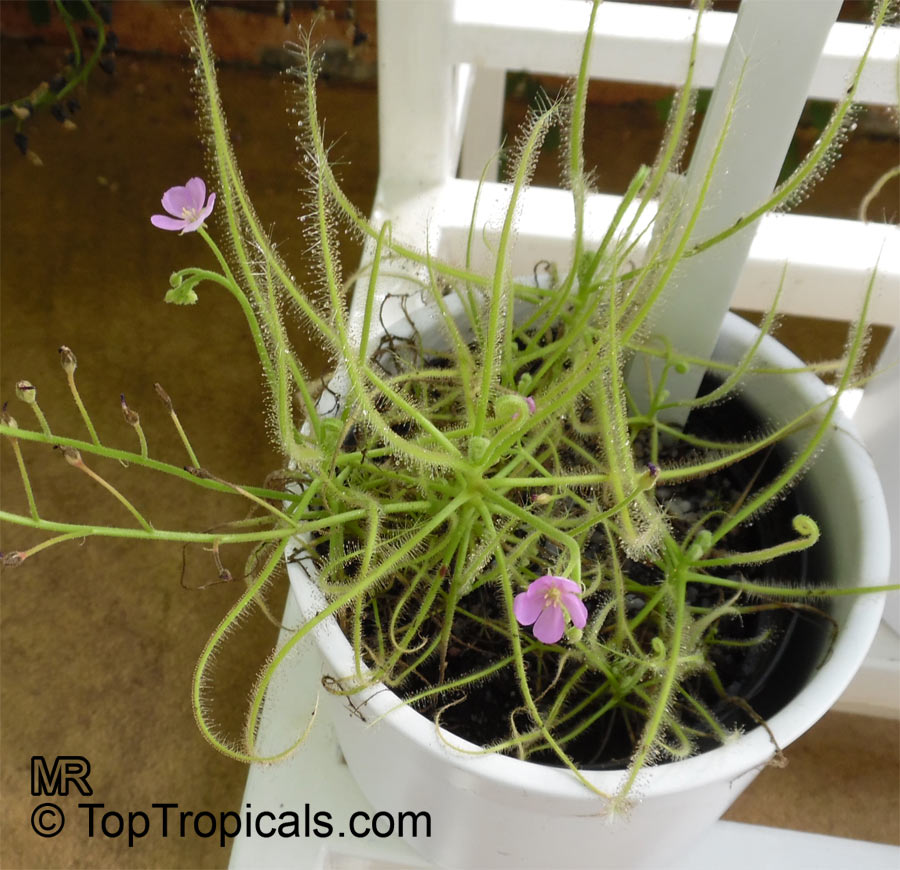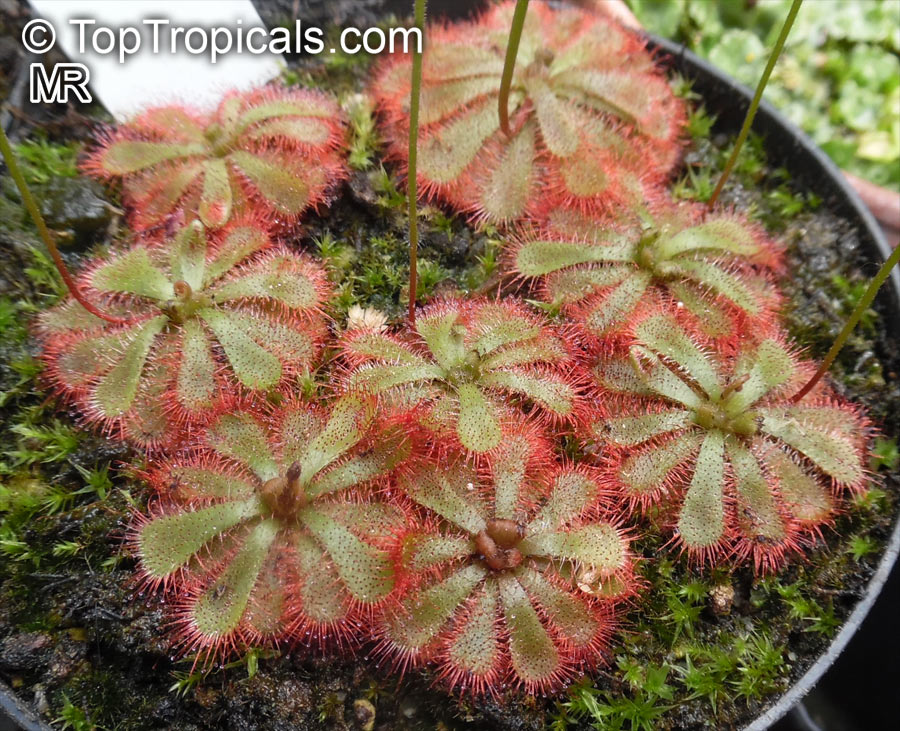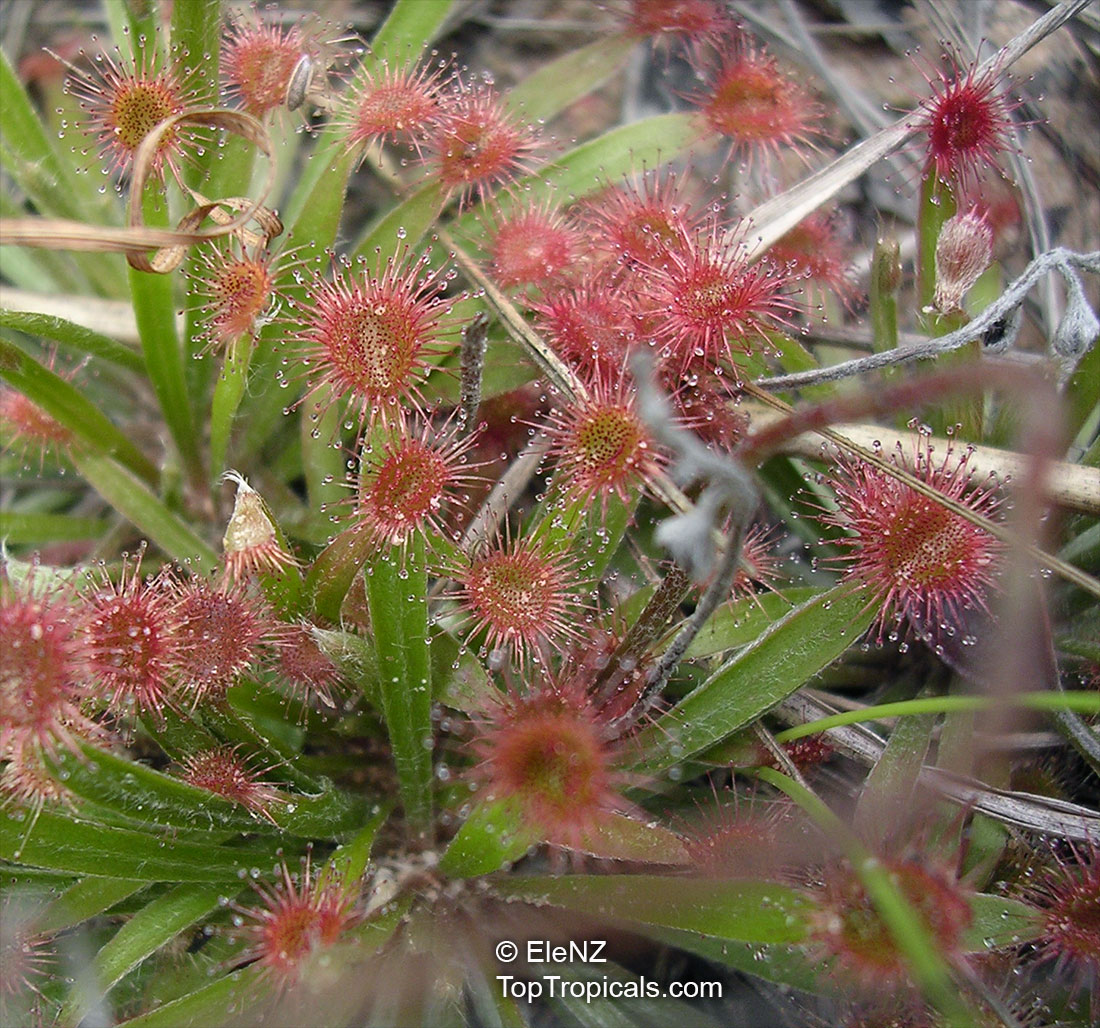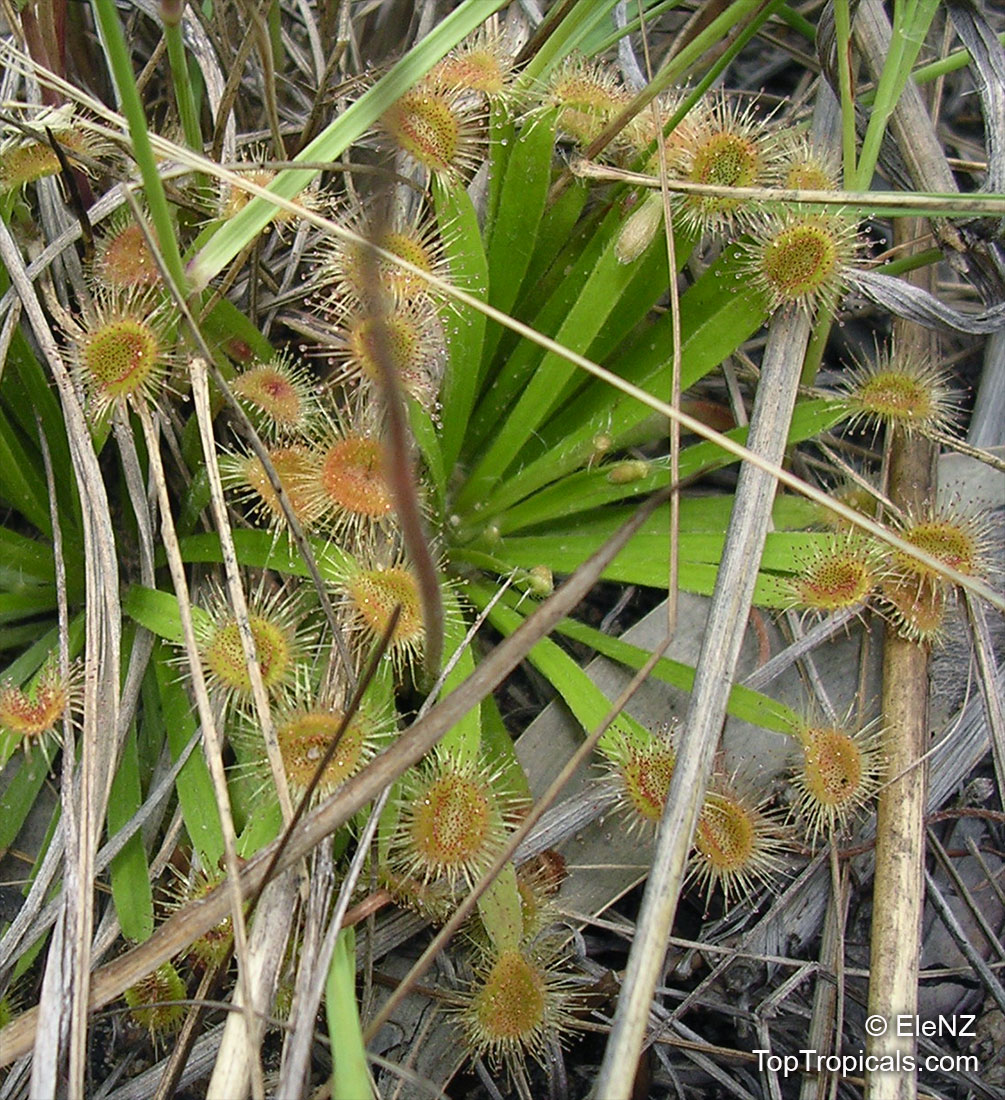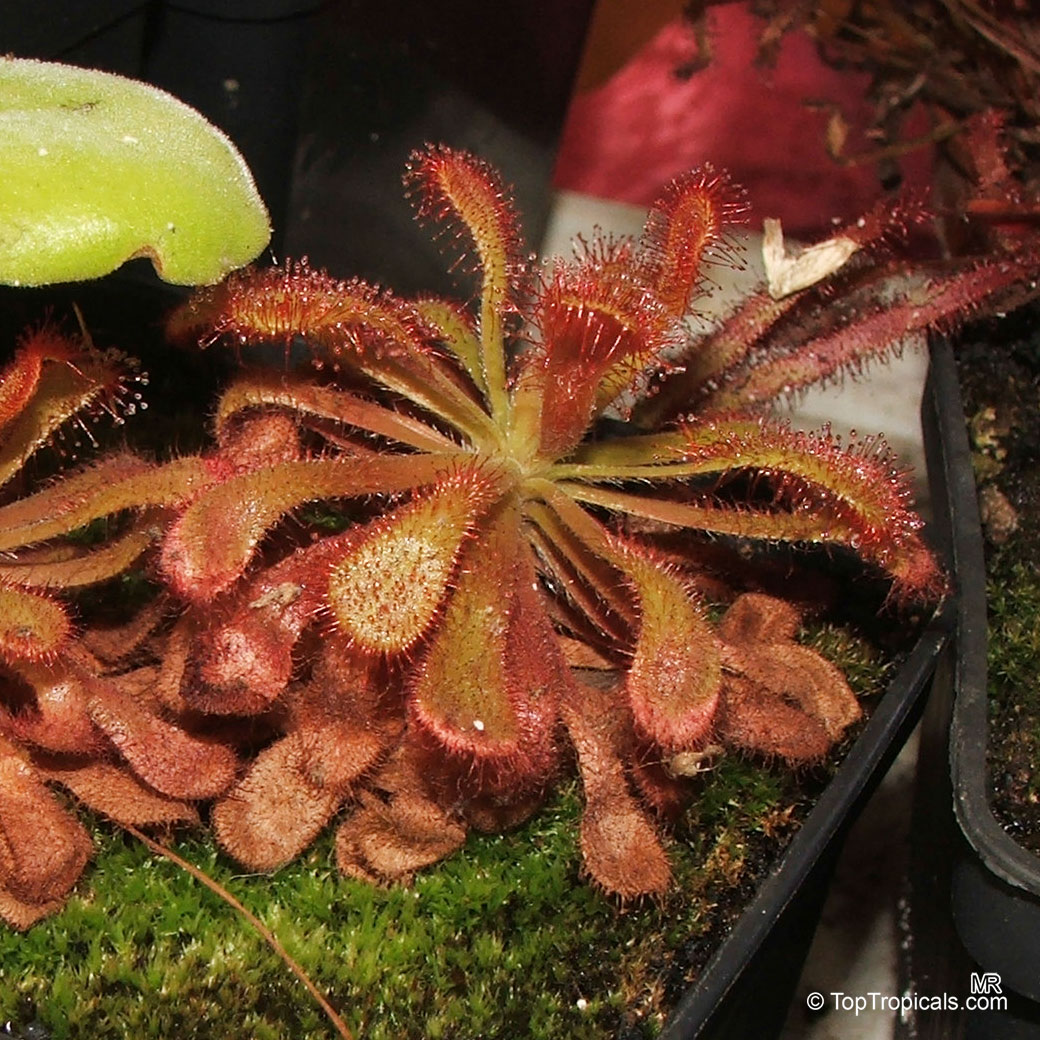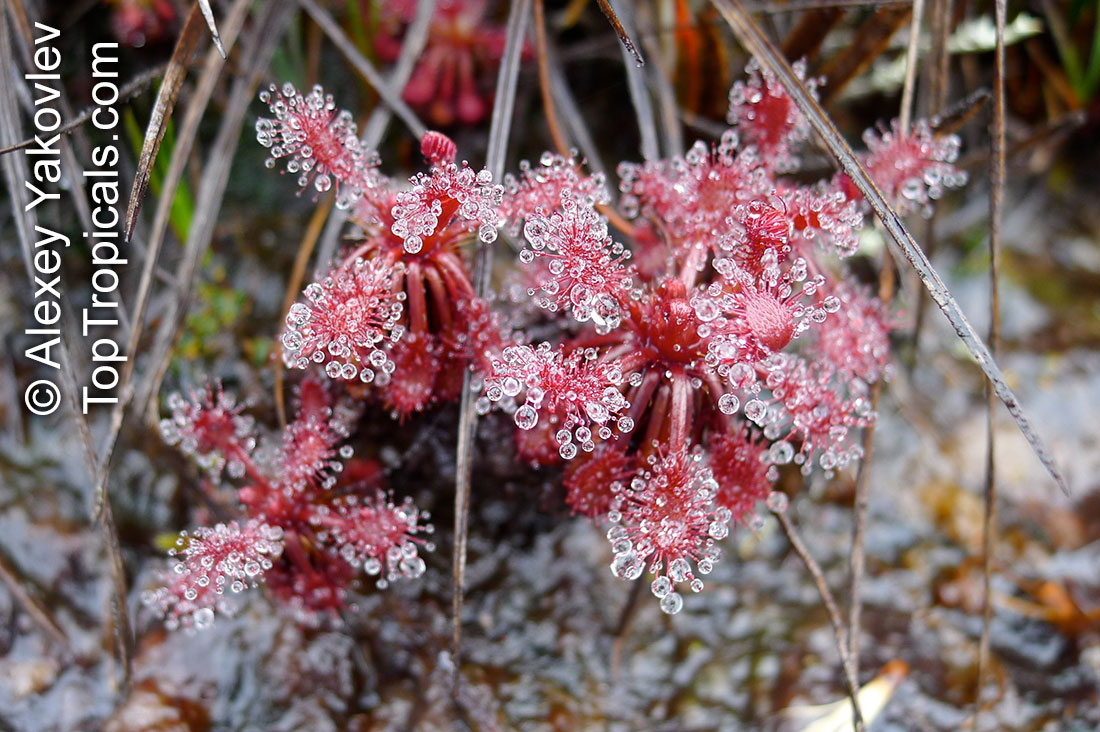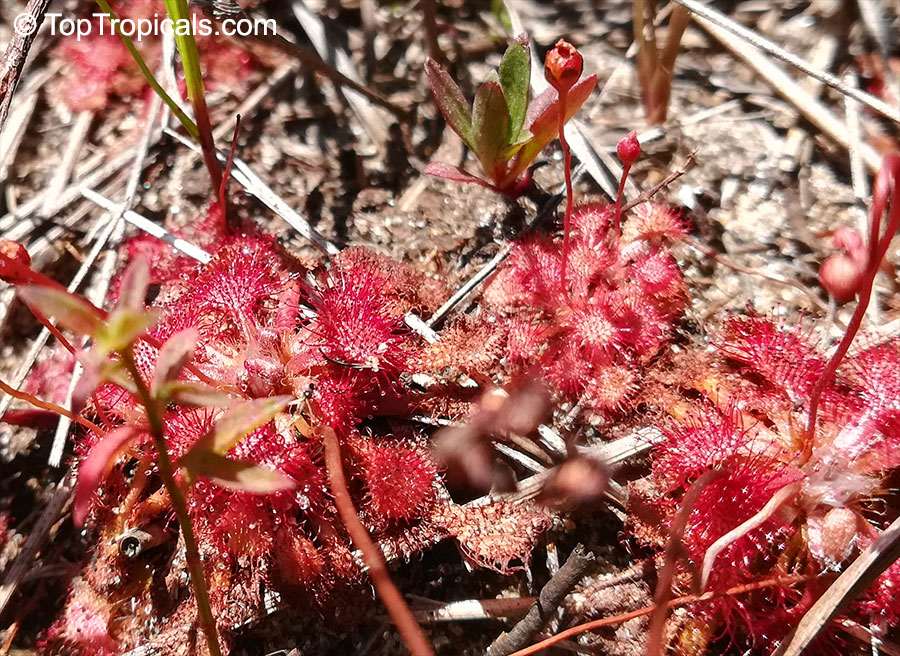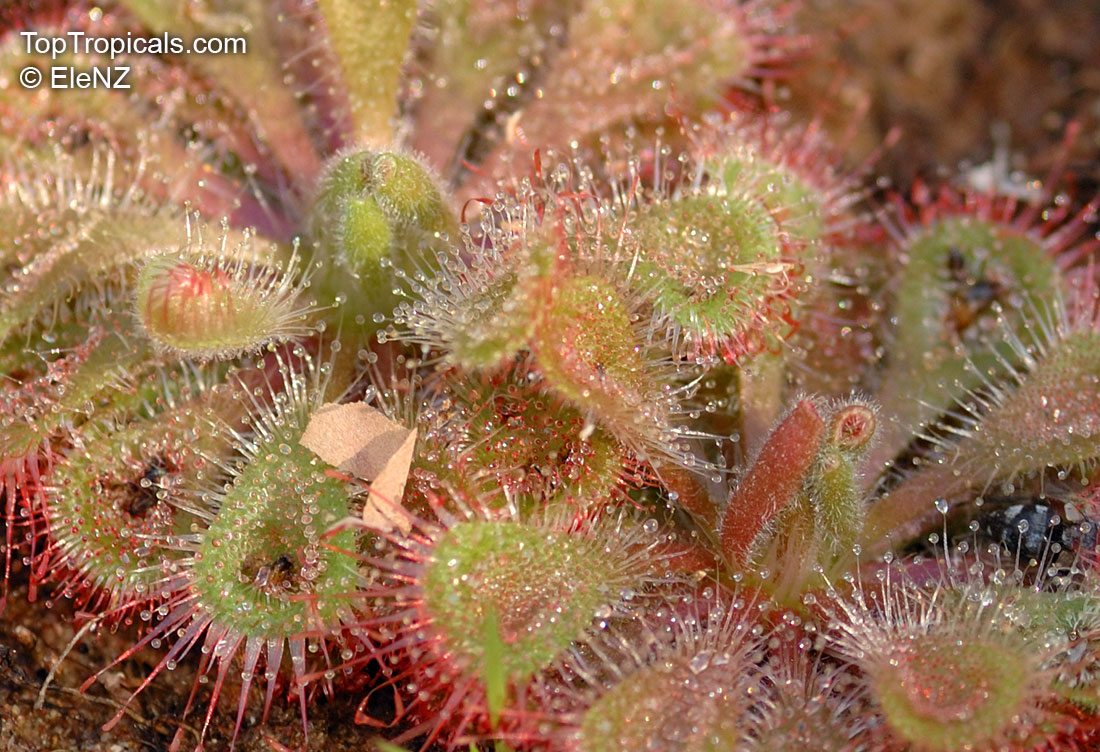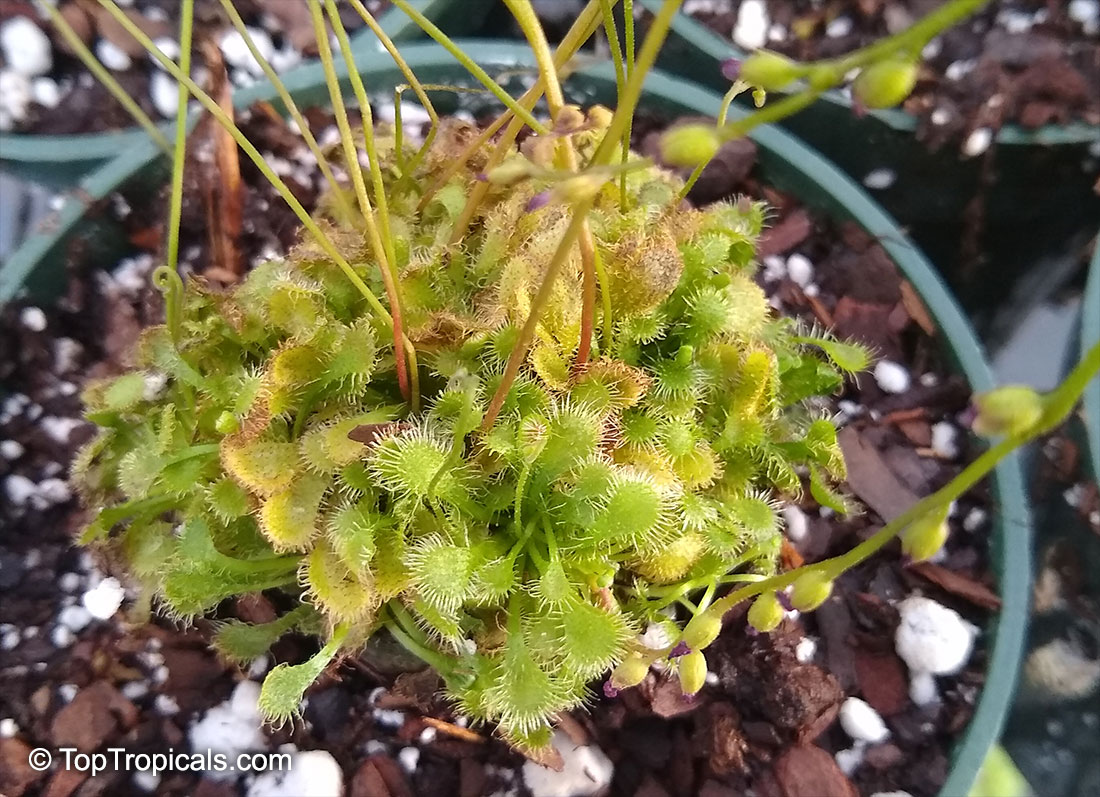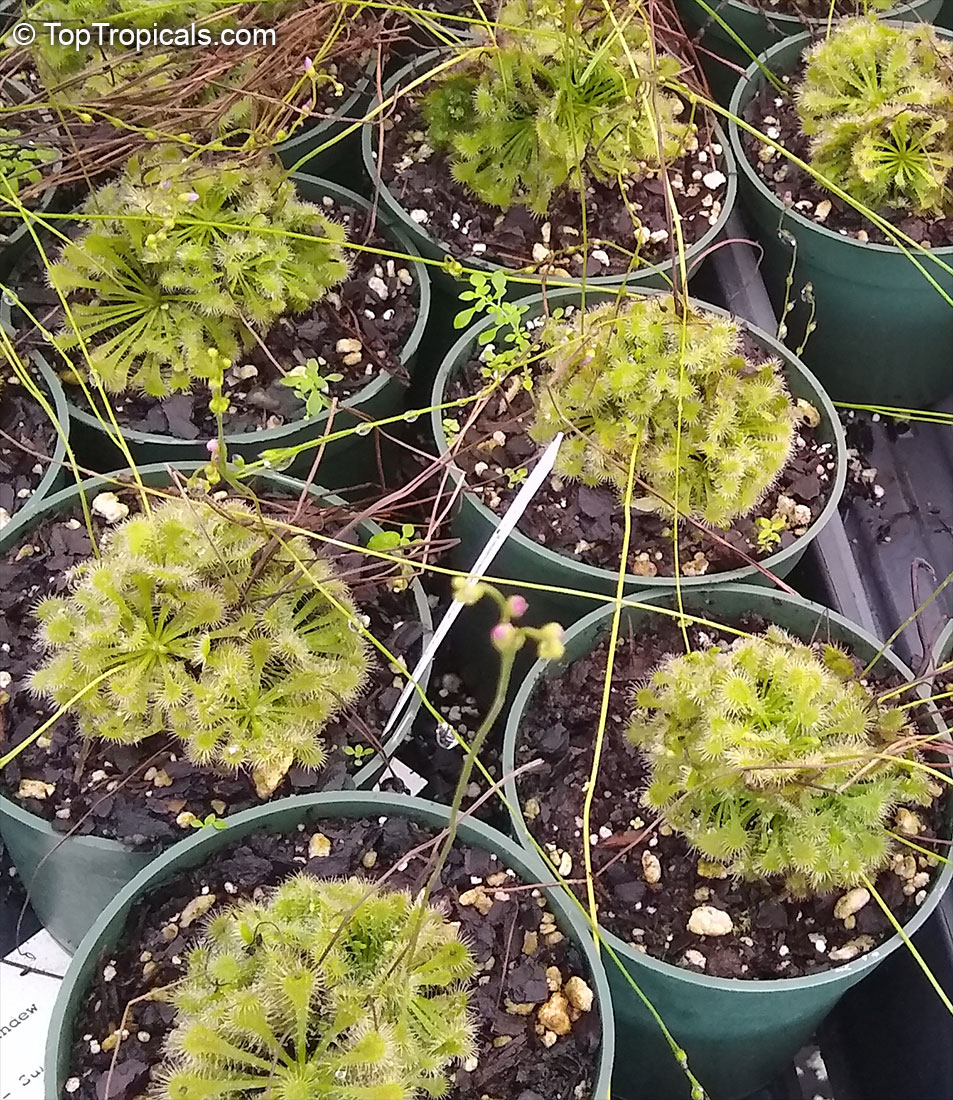Droseraceae - Botanical Family
Top Tropicals Plant Encyclopedia
| Number of plants found: 2 |
Botanical name: Dionaea muscipula
Common name: Venus flytrap
Family: Droseraceae






The Venus flytrap is a small herbaceous wetland plant characterized by unique hinged clamshell-like traps that spring closed to catch unwary insects. Venus flytrap grows from a fleshy white rhizome which gives rise to 4-6in rosettes of reclining leaves. Each leaf consists of a relatively broad petiole (leaf stem) and a leaf blade which is modified into the trap. The perennial Venus flytrap blooms in May and June with white, five-petaled blossoms which are held a few inches above the foliage. Caring for Venus flytrap in cultivation is not too difficult, and they require no major difference to general Carnivorous Plants care. A common Venus flytrap soil mixture is 1 part sphagnum moss peat to 1 part sand, and they can be grown on the tray system - taking care to ensure the water is suitable. Venus flytraps require at least three months of cool dormancy, and will tolerate light frosts. Venus flytraps require a substrate that is constantly moist and an atmosphere with at least 80% relative humidity. They can tolerate brief periods of flooding and drying out. During the growing season, keep the planting medium constantly moist. During the winter, keep it just barely moist. Never water with anything but rain water.
Botanical name: Drosera sp.
Common name: Sundew
Family: Droseraceae




For groundcover and low-growing plants that form 2ft rosettes, try Drosera spatulata, (Spoon-leaved Sundew), Drosera filiformis (Thread Leaf Sundew), or Drosera peltata (Fan-leaved Sundew). Growers in USDA Zone 9-10 can try Drosera grandiflora, or Drosera aliciae (Alice Sundew) for reliable success. All of these may appreciate more shade, with regular water, and all have ornamental foliage year-round in warmer climate. For cold climate, the hardier Drosera species will require full sun, less water and tolerate short spells of cool conditions.
Drosera sp. (Sundew) is a genus of plant with over 160 species, found around the world, with the exception of Arctic and Antarctic regions. The Sundew name is derived from the substance (mucilage) on the leaves, which appear to be glistening in the sunlight and look like dew. Although it may appear quite lovely, the Sundew actually captures its prey in an interesting but morbid way; using tiny glands found on the leaves which secrete a sticky mucilage. When insects come in contact with the mucilage, it captures them and slowly digests them.
When it comes to cultivation, Sundews are generally rosette-forming plants that prefer sunny conditions, and a soil mix of 1 part sphagnum moss peat to one part sand will suit most species. When planting these hardier varieties, it's important to provide full sun and less water, and to ensure the soil is well draining. Pot growing is also recommended for colder areas.
Use link to repeat this search:
https://toptropicals.com/cgi-bin/garden_catalog/cat.cgi?search_op=and&keyword_op=and&language=e&family=Droseraceae&number=10
&no_change_lang=1&user=tt&sale=1&first=0
